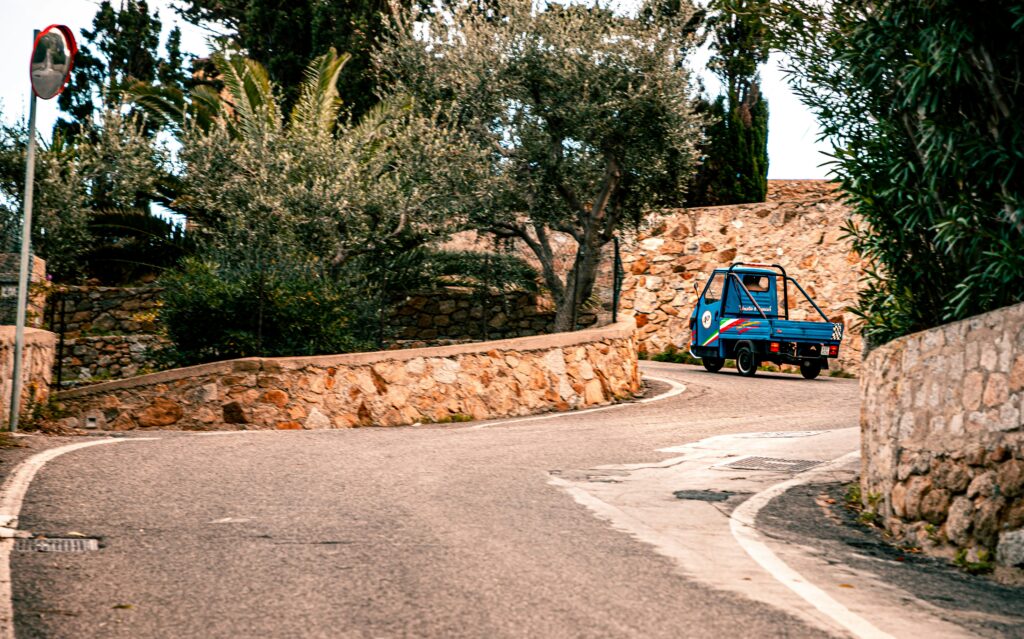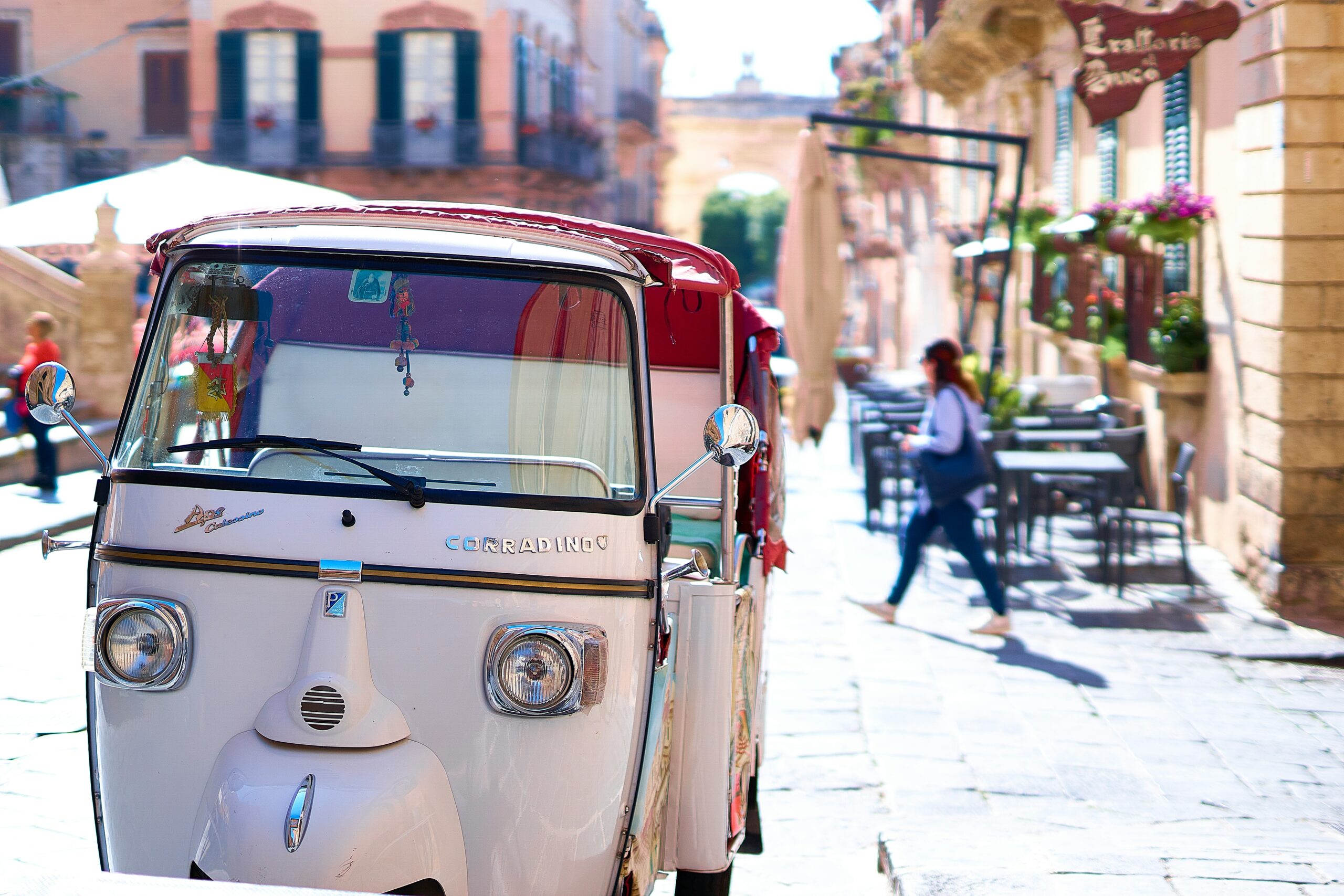Back then, when the first Ape fired up its engine, it looked almost ugly. It was nothing more than an adventurous Vespa scooter covered with a lot of sheet metal. All that sheet metal was intended to protect the rider from the weather and possible accident damage. As the Ape was essentially based on the Vespa, it did not have a steering wheel but a conventional scooter handlebar. Nobody could have guessed that this vehicle would one day achieve cult status.
From scooter to three-wheeled transporter
1948 – the very first Ape was the Ape A
The Ape was a Vespa scooter that was later converted into a Vespa car. This meant that the vehicle initially fulfilled the purpose for which it had been produced: a simple, affordable, lightweight and, above all, inexpensive vehicle for transporting loads from A to B. The name Vespa-Car was only adopted into Piaggio’s vocabulary years later (1971). As the road conditions in the post-war period were correspondingly miserable, the owner of an Ape had to reckon with frequent breakdowns and repairs. The Ape was therefore designed to be as easy and inexpensive to repair as possible.
Due to this fact, the first engine was a simple and robust 50 cm³ two-stroke engine that could be repaired by the vehicle owner himself if necessary, provided he had the technical talent. If you have the technical know-how and an Ape today, you can find suitable spare and tuning parts in the SIP Scootershop.

1950 – the first Ape 50 rolled off the production line
The Ape 50 was a successful vehicle that still fell into the moped category. However, it was only intended for light loads and could only transport 200 kg. This model was small and maneuverable. Narrow alleyways in winding urban areas could now be negotiated with it.
The driver’s cab also remained the same.
1952 – the Ape B was launched
It was characterized by an improved engine. A corrected structure must also be mentioned. This model was produced until 1956.
1956 – the Ape C was the first to introduce an innovation that was revolutionary at the time
It was given a driver’s cab as reliable protection against the weather. What a step forward, which nowadays only brings a smile to our faces.
1960 – new Pentaro model
A new model appeared as a modification of the Ape C, the only difference being a higher carrying capacity.
1971 – now the Ape Car was introduced
In addition to a higher payload of no less than 550 kg, the driver’s cab was characterized by somewhat more comfort. The displacement was now an impressive 216 cm³.

In the years between 1970 and 1990, the development of the Ape was advanced
1980 – greater focus on higher payloads
The engine power, chassis and brakes were continuously improved. The groaning, rattling and noisy vehicle, which in principle was quite unattractive, was gradually given innovations worth seeing and something like design.
1982 – another minor sensation was on the horizon that year
The Ape TM was born. The first thing the careful observer noticed was that the TM was equipped with a steering wheel. TM stands for Trade Mark and means that property rights are available.
The engine established itself with a displacement of 220 cm³. The load compartment could now carry 700 kg.
1990 – more safety
The year 1990 was all about adapting to stricter emission standards. Safety was also carefully considered. Last but not least, the engineers from Pontedera improved driving comfort.
2000 – Stricter environmental regulations and fewer emissions
Once again, the focus was on reducing emissions. The developers tried to achieve this with more efficient four-stroke engines. At the same time, the interior of the tin can was modernized. Improvements to the design were also considered and implemented.
From 2010 – further development of the four-stroke engines
The first attempts were made to develop electric variants.
2014 – the Ape Classic 400 was created
This version was a modernized Ape 400 Classic, which was now produced in series.
2024 – the end of Ape production in Europe
The Ape can no longer keep up with the stricter EU emissions and safety regulations and its production in the EU is discontinued. However, the Ape had lost none of its popularity. The iconic three-wheeler is still being produced in India. Asian countries were also one step ahead of us in the production of electric models. For this reason, the Piaggio Group now concentrates more on the development of electric Ape successor models.
Conclusion
In conclusion, the following technical developments over the past decades can be summarized:
- Transition from two-stroke to four-stroke engines
- The first diesel engines were also added
- Introduction of electric motors
- Continuous refinements for greater safety and stability
- the design was gradually adapted to modern standards
- last but not least, the developers at Piaggio took into account improvements in functionality and comfort
- despite strenuous efforts, it was not possible to adapt beyond standard 4 without exploding costs
- as a logical consequence, production in Europe had to be discontinued
Even if the funny icon will gradually disappear from the roads of Europe, we hope that many of the cult vehicles will remain with us for a long time to come.



